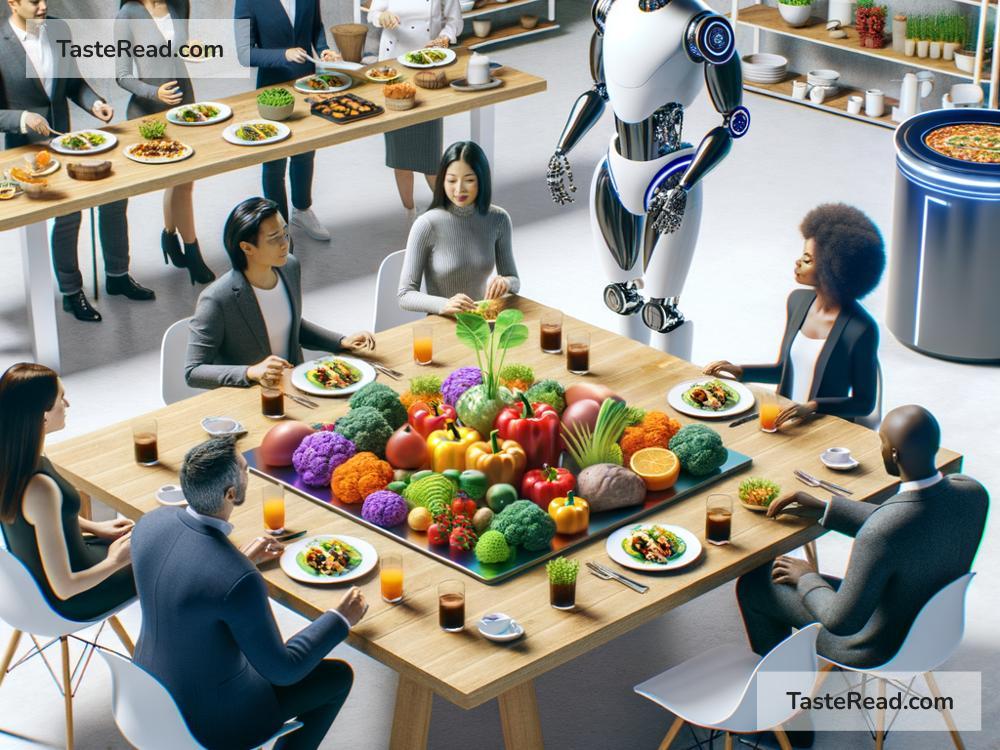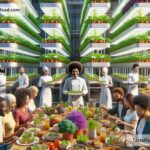The Future of Food and Public Engagement
Food holds a special place in our hearts, homes, and culture. It’s what fuels us and brings us together, whether we’re sharing a meal with loved ones or diving into street food on a sunny day. But as the world changes, so does the way we grow, make, and eat food. The future of food needs to address a growing population, environmental challenges, and health concerns. To make these changes successful, public engagement is more important than ever. In this blog, we’ll explore the exciting future of food and why involving people in the conversation matters.
Challenges Facing the Food System
The world’s population is still growing, and by 2050, experts estimate we’ll need to feed nearly 10 billion people. This isn’t easy—our current food system already struggles to balance supply with demand. At the same time, climate change is affecting agriculture. Droughts, floods, and extreme weather are reducing the amount of food we can grow. Many crops are under threat as old farming methods become less reliable.
Similarly, food production today generates a lot of greenhouse gas emissions. Whether it’s transporting food across the globe or raising animals for meat, every step adds to environmental problems. On top of that, waste is a major issue. Tons of uneaten food end up in landfills every year, contributing to pollution while many people still go hungry.
These challenges mean we need better solutions—a food system that supports the planet, keeps people healthy, and ensures no one is left without access to food.
What Does the Future of Food Look Like?
The future of food is creative, tech-savvy, and focused on sustainability. Here are some exciting innovations reshaping the way we eat:
-
Lab-Grown Meat
Imagine eating a burger that didn’t come from a cow on a farm but was grown in a lab. Scientists are developing lab-grown meat, also called cultivated or cultured meat, which uses animal cells to recreate meat without traditional farming. This could reduce the environmental harm caused by raising livestock and make meat production more efficient. -
Plant-Based Alternatives
Plant-based foods are already popular, and their future looks bright. These products mimic meat, cheese, and dairy but are made entirely from plants. They’re less harmful to the environment and can be healthier for us. With advancements in technology, plant-based options are becoming more delicious and affordable. -
Vertical Farming
Traditional farming needs a lot of land, but vertical farming takes a different approach—it grows crops indoors in stacked layers. These farms use less water, pesticides, and space, and can be built closer to cities. This means people can eat fresh produce year-round, grown right in their communities. -
Alternative Proteins
Protein isn’t just found in meat—it’s in insects, algae, and even mushrooms, too! These protein sources are nutritious, sustainable, and don’t require large amounts of land or water. In the future, we could see cricket proteins or spirulina shakes becoming part of our everyday diets. -
Food-Tech Innovations
From robots that harvest crops to apps that help people reduce food waste, technology is playing a growing role in shaping our food system. Smart packaging could tell you when food is about to expire, while AI-powered tools could manage farming more efficiently.
Why Public Engagement Matters
To make these futuristic ideas work, people need to be involved. Changing how the world eats isn’t just about science and innovation—it’s also about values, tastes, and trust. Public engagement is key to understanding what people want and how they feel about food changes.
For example, some might hesitate to eat lab-grown meat or insect-based protein. Their concerns—whether cultural, ethical, or simply unfamiliarity—deserve to be addressed. Companies and scientists must talk openly with communities to explain how these options work and why they could be beneficial. Transparency builds trust.
Public engagement also highlights what’s important to different regions. A technology that works for one country might not work for another. Listening to local communities ensures food systems meet diverse needs worldwide.
Finally, involving people in discussions around food empowers them to make choices for themselves. When customers understand how their food is grown and its impact on the planet, they’re more likely to make sustainable decisions, like eating plant-based meals or reducing food waste at home.
How Can We Engage?
Getting the public involved starts with conversation. Events like food festivals, workshops, and community farming projects are great ways to spark interest in sustainable food practices. Schools can teach kids about healthy eating and responsible food choices, helping the next generation understand the importance of change.
Social media campaigns, documentaries, and news stories also play a role in educating the public. They can highlight the challenges, showcase solutions, and celebrate innovations that promise a better future.
Governments and organizations, too, must open communication channels that encourage people to share ideas, concerns, and feedback. Policies in food production should reflect the voices of the communities they serve.
The Future Is Delicious and Inclusive
The future of food has endless possibilities, but solving the challenges we face will require teamwork. Public engagement is not an option—it’s a necessity. When communities, scientists, policymakers, and businesses come together, we can build a food system that doesn’t just survive in the future, but thrives.
As we look ahead, let’s celebrate the creative solutions and commit to working together toward a healthier planet and happier meals for everyone. With innovation and collaboration, the future of food promises to be as exciting and diverse as our plates. Don’t just watch it happen—be part of the change!


